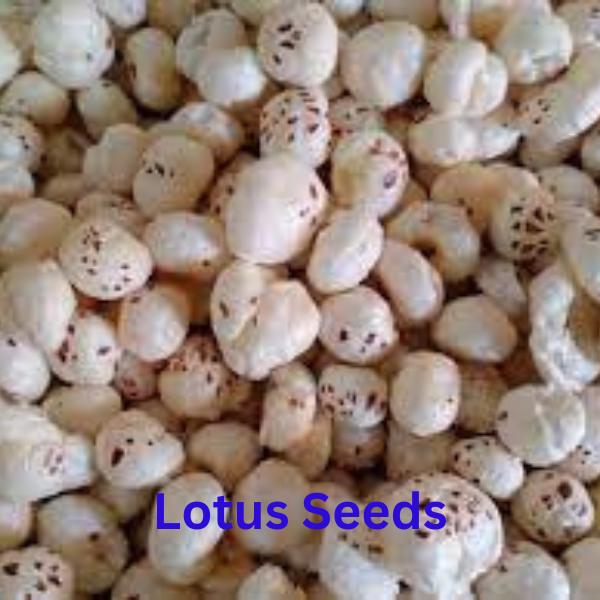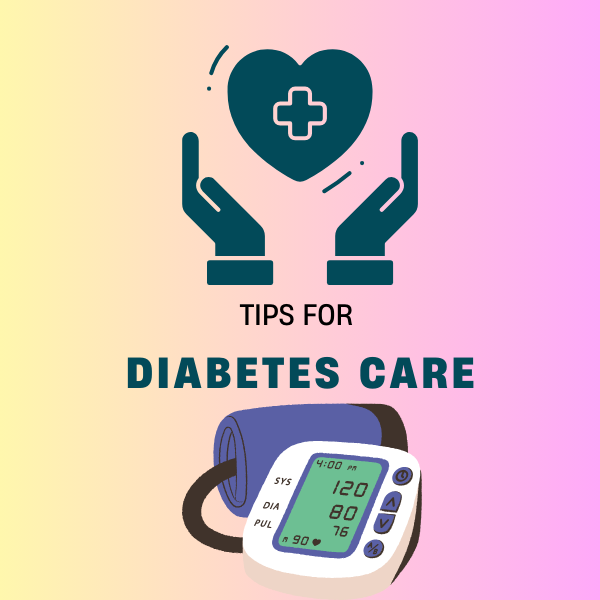Beans is one of the best vegetables for diabetes and a humble yet versatile vegetable, have long been celebrated for their nutritional benefits and culinary appeal. From savory stews to zesty salads, beans are a staple ingredient in cuisines around the world. But beyond their delicious flavor and satisfying texture, beans offer a plethora of health benefits, particularly for individuals managing diabetes.
Table of Contents
1. The Power of Beans: A Diabetes-Friendly Best Vegetables for diabetes:
Nutritional Powerhouse:
Beans are a nutritional powerhouse, packed with essential nutrients that promote overall health. They are an excellent source of complex carbohydrates, fiber, protein, vitamins, and minerals. The high fiber content in beans, both soluble and insoluble, plays a crucial role in regulating blood sugar levels.
Because of its high nutritional value, its considered one of the best vegetables for diabetes.
Blood Sugar Control:
For individuals with diabetes, maintaining stable blood sugar levels is paramount for overall health and well-being. The fiber content in beans slows down the absorption of glucose into the bloodstream, preventing rapid spikes in blood sugar levels after meals. This gradual release of glucose helps to keep blood sugar levels steady, reducing the risk of hyperglycemia.
Moreover, beans have a low glycemic index (GI), which means they cause a gradual and modest rise in blood sugar levels compared to high-GI foods. Incorporating beans into meals can help improve glycemic control and reduce the need for insulin or diabetes medication.
Heart Health Benefits:
In addition to aiding in blood sugar control, beans offer numerous cardiovascular benefits. The soluble fiber found in beans helps lower LDL (bad) cholesterol levels, thereby reducing the risk of heart disease and stroke, which are common complications of diabetes. Furthermore, beans are naturally low in fat and cholesterol, making them a heart-healthy protein alternative to fatty meats.
Weight Management:
Weight management is an integral aspect of diabetes management, as excess weight can exacerbate insulin resistance and increase the risk of complications. Beans are a nutrient-dense, low-calorie food that provides a feeling of fullness and satiety, promoting weight loss and weight maintenance. By incorporating beans into meals, individuals with diabetes can enjoy satisfying, flavorful dishes while managing their weight effectively.
Versatile and Delicious:
One of the greatest appeals of beans is their versatility in the kitchen. From black beans and kidney beans to chickpeas and lentils, there is a wide variety of beans to choose from, each offering its unique flavor and texture. Beans can be incorporated into an array of dishes, including soups, salads, stews, chili, dips, and even desserts.
Tips for Incorporating Beans into Your Diet:
Start Slowly: If you’re not accustomed to consuming beans regularly, start by incorporating small servings into your meals to allow your digestive system to adjust gradually.
Mix and Match: Experiment with different types of beans and recipes to find combinations that suit your taste preferences. Mix beans into salads, stir-fries, casseroles, and wraps for added texture and flavor.
Prepare Beans Properly: To enhance digestibility and reduce gas production, soak dried beans overnight before cooking and discard the soaking water. Alternatively, opt for canned beans, which are convenient and ready to use after rinsing.
Watch Portion Sizes: While beans are nutritious, they still contain carbohydrates, so it’s essential to monitor portion sizes, especially if you’re counting carbohydrates to manage blood sugar levels.
In a nutshell:
Beans are a diabetes-friendly vegetable that offers a myriad of health benefits, including blood sugar control, heart health promotion, weight management, and culinary versatility. By incorporating beans into your diet regularly, you can enjoy delicious and satisfying meals while supporting your overall health and well-being. So go ahead, embrace the power of beans and savor the flavor of good health!
2. Incorporating Carrots into Your Diabetes-Friendly Diet:
1. Carrot Soups and Stews: Create hearty and nutritious soups or stews by incorporating carrots as a primary ingredient. Combine carrots with other vegetables, lean proteins, and whole grains for a balanced and satisfying meal.
2. Carrot Salads: Add shredded or sliced carrots to salads for a pop of color, flavor, and crunch. Combine with leafy greens, fruits, nuts, and a light vinaigrette dressing for a refreshing and nutritious salad.
3. Carrot Smoothies: Blend carrots into smoothies along with fruits like bananas, berries, or oranges, and a source of protein like Greek yogurt or protein powder. This creates a delicious and nutrient-packed beverage that can be enjoyed as a meal or snack.
4. Carrot Side Dishes: Roast or steam carrots as a flavorful and nutritious side dish to accompany your main meals. Season with herbs, spices, and a drizzle of olive oil for added flavor without excess calories.
5. Carrot Snacks: Keep sliced or baby carrots on hand for a convenient and healthy snack option. Pair with hummus, guacamole, or Greek yogurt dip for added protein and flavor.
Precautions and Considerations:
While carrots offer numerous health benefits for individuals managing diabetes, it’s essential to consider portion sizes and overall dietary balance. Carrots, like all foods, contain carbohydrates that can affect blood sugar levels, so it’s crucial to monitor portions and account for them within your meal plan.
Additionally, individuals with diabetes should focus on consuming a well-rounded diet that includes a variety of nutrient-dense foods, such as fruits, vegetables, whole grains, lean proteins, and healthy fats. It’s also essential to work with a healthcare provider or registered dietitian to develop a personalized meal plan that meets individual nutritional needs and blood sugar targets.
In a nutshell,
Carrots are a diabetes-friendly vegetable that offers a multitude of health benefits, including blood sugar regulation, heart health promotion, and weight management support. By incorporating carrots into a balanced and varied diet, individuals with diabetes can enjoy their sweet flavor and nutritional benefits while supporting their overall health and well-being. So go ahead, embrace the versatility of carrots, and discover the many delicious ways to incorporate them into your diabetes-friendly meal plan!
3. Broccoli: A Diabetes-Friendly Super food
Broccoli is a green vegetable that looks like a small tree. It’s not just any vegetable – it’s a superfood! Superfoods are foods that are packed with lots of good stuff that helps keep our bodies healthy. And broccoli is one of the best superfoods out there, especially for people with diabetes.
What Makes Broccoli Special?
Broccoli is full of things that are good for us. One of the best things about broccoli is that it has a lot of fiber. Fiber is like a superhero that helps our bodies in many ways. One of its superpowers is that it helps control our blood sugar levels. When we eat foods with fiber, like broccoli, our blood sugar doesn’t go up too quickly. This is really important for people with diabetes because they need to keep their blood sugar levels in check.
How Does Broccoli Help People with Diabetes?
When we eat food, our bodies break it down into sugar, which gives us energy. But sometimes, our bodies have trouble using this sugar properly, especially for people with diabetes. That’s where broccoli comes in to save the day! Broccoli has a special kind of fiber that slows down how quickly sugar gets into our blood. This means our blood sugar levels stay more stable, which is really important for people with diabetes.
Other Cool Things About Broccoli:
Vitamins and Minerals: Broccoli is also packed with lots of vitamins and minerals that keep us healthy, like vitamin C, vitamin K, and folate. These vitamins and minerals help our bodies fight off sickness and stay strong.
Low in Calories: Broccoli is low in calories, which means we can eat a lot of it without worrying too much about gaining weight. This is great for people with diabetes who want to manage their weight.
Versatile and Delicious: Broccoli can be eaten in many different ways – raw, steamed, roasted, or even added to soups and stir-fries. It’s tasty and easy to include in lots of different meals.
To Enjoy Broccoli:
There are so many yummy ways to eat broccoli! Here are some ideas:
Raw Snack: Dip raw broccoli florets in hummus or Greek yogurt dip for a crunchy and healthy snack.
Steamed Side Dish: Steam broccoli until it’s tender, then drizzle with a little bit of olive oil and sprinkle with garlic powder or lemon juice for flavor.
Roasted Delight: Toss broccoli florets with olive oil, salt, and pepper, then roast in the oven until they’re golden brown and crispy around the edges.
Added to Meals: Add chopped broccoli to pasta dishes, stir-fries, omelets, or soups for extra flavor and nutrition.
In a nutshell:
Broccoli is not just a regular vegetable – it’s a super food that can help people with diabetes keep their blood sugar levels in check. With its high fiber content, vitamins, and minerals, broccoli is a delicious and nutritious addition to any meal. So, next time you’re at the grocery store, don’t forget to pick up some broccoli and enjoy all the health benefits it has to offer!
4. The Mighty Cabbage: A Diabetes-Friendly Vegetable
Cabbage might not be the fanciest vegetable in the garden, but it sure packs a punch when it comes to health benefits, especially for people with diabetes. This humble vegetable is not only affordable and versatile but also a powerhouse of nutrients that can help keep blood sugar levels in check.
What Makes Cabbage Special?
Cabbage is a leafy green or purple vegetable that belongs to the cruciferous family, along with broccoli, cauliflower, and Brussels sprouts. It’s crunchy, slightly sweet, and can be eaten raw or cooked in various dishes. But what makes cabbage truly special is its impressive nutritional profile.
Fiber Powerhouse:
One of the standout features of cabbage is its high fiber content. Fiber is like a superhero for people with diabetes because it helps slow down the absorption of sugar into the bloodstream. This means that when we eat cabbage, our blood sugar levels don’t spike as quickly, which is essential for managing diabetes.
Blood Sugar Control:
For people with diabetes, keeping blood sugar levels stable is crucial for overall health. The fiber in cabbage helps regulate blood sugar levels by slowing down digestion and preventing rapid spikes. This can reduce the risk of complications associated with diabetes and promote better overall well-being.
Other Health Benefits:
Besides its blood sugar-lowering properties, cabbage offers a range of other health benefits:
Low in Calories: Cabbage is low in calories but high in nutrients, making it an excellent choice for weight management, which is important for people with diabetes.
Rich in Vitamins and Minerals: Cabbage is packed with vitamins and minerals like vitamin C, vitamin K, folate, and potassium, which are essential for overall health and immune function.
Antioxidant Properties: Cabbage contains antioxidants like flavonoids and polyphenols, which help protect the body from damage caused by harmful free radicals.
Delicious Ways to Enjoy Cabbage:
Cabbage can be enjoyed in many different ways, making it a versatile addition to any meal:
Raw in Salads: Shred cabbage and toss it with your favorite veggies and a light dressing for a refreshing and crunchy salad.
Stir-Fried or Sauteed: Cook cabbage with other vegetables, lean protein, and flavorful spices for a quick and nutritious stir-fry or sauteed dish.
Pickled or Fermented: Try pickling or fermenting cabbage to create delicious and tangy condiments like sauerkraut or kimchi, which are also great for gut health.
Stuffed Cabbage Rolls: Fill cabbage leaves with a savory filling of rice, lentils, or ground meat, then bake in a tomato sauce for a hearty and satisfying meal.
In a nutshell,
Cabbage may not get as much attention as some other vegetables, but its health benefits for people with diabetes are undeniable. With its high fiber content, low calorie count, and array of vitamins and minerals, cabbage is a simple yet powerful addition to any diabetes-friendly diet. So next time you’re at the grocery store, don’t overlook the mighty cabbage – your health will thank you for it!
5. Cool and Crisp: How Cucumbers Help Control Blood Sugar in Diabetes
Cucumbers are not just for salads or spa days – they’re also a secret weapon for managing diabetes! These crunchy green veggies might seem simple, but they’re packed with benefits that can help keep blood sugar levels in check.
What Makes Cucumbers Special?
Cucumbers are made up of mostly water, which means they’re super hydrating and refreshing. But that’s not all – cucumbers are also low in calories and carbohydrates, making them a great choice for people with diabetes who need to watch their blood sugar levels.
Hydration and Blood Sugar Control:
Staying hydrated is important for everyone, but it’s especially crucial for people with diabetes. When we’re dehydrated, our blood sugar levels can go up. That’s where cucumbers come in – they’re made up of about 95% water, so eating them helps keep us hydrated and our blood sugar levels stable.
Low in Carbs and Calories:
One of the reasons cucumbers are so great for people with diabetes is that they’re low in carbohydrates and calories. This means you can enjoy them without worrying too much about their impact on your blood sugar levels or your waistline.
Fiber Boost:
While cucumbers aren’t super high in fiber compared to some other veggies, they still provide a small but helpful amount. Fiber is important for digestion and can help slow down the absorption of sugar into the bloodstream. So even though cucumbers might not have as much fiber as, say, broccoli, every little bit helps when it comes to managing blood sugar levels.
Versatile and Delicious:
Cucumbers are incredibly versatile and can be enjoyed in many different ways:
Raw Snacks: Slice up cucumbers and enjoy them as a crunchy and refreshing snack on their own or with a healthy dip like hummus or Greek yogurt.
Salads: Add sliced or chopped cucumbers to salads for extra crunch and hydration. They pair well with leafy greens, tomatoes, bell peppers, and your favorite dressing.
Sandwiches and Wraps: Use cucumber slices as a crunchy and low-carb replacement for bread in sandwiches or wraps. They add a refreshing flavor and texture to your favorite fillings.
Infused Water: Add cucumber slices to water along with some fresh mint or citrus slices for a refreshing and hydrating beverage that’s perfect for hot days.
In a nutshell,
Cucumbers may seem simple, but they’re a powerful ally for managing diabetes. With their high water content, low carbs and calories, and small but helpful amount of fiber, cucumbers are a delicious and nutritious addition to any diabetes-friendly diet. So next time you’re looking for a cool and crisp snack or side dish, reach for a cucumber – your blood sugar levels will thank you for it!
Summary:
Overall and because of their individual nutritional value and the ability to control blood sugar levels, they are all considered as the best vegetables for diabetes. However, it is always advisable to consult with Diabetic/Diet professional in terms the quantity to be consumed per day for each type of vegetables.





